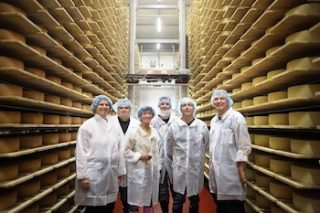
Cheese Immersion Experience Works to Inspire Culinary Instructors and Students
Monday, 02 November 2015 13:39Emmi Roth USA and the Wisconsin Milk Marketing Board welcomed three culinary instructors and three culinary students from around the country to participate in a Wisconsin Cheese Immersion learning experience.




